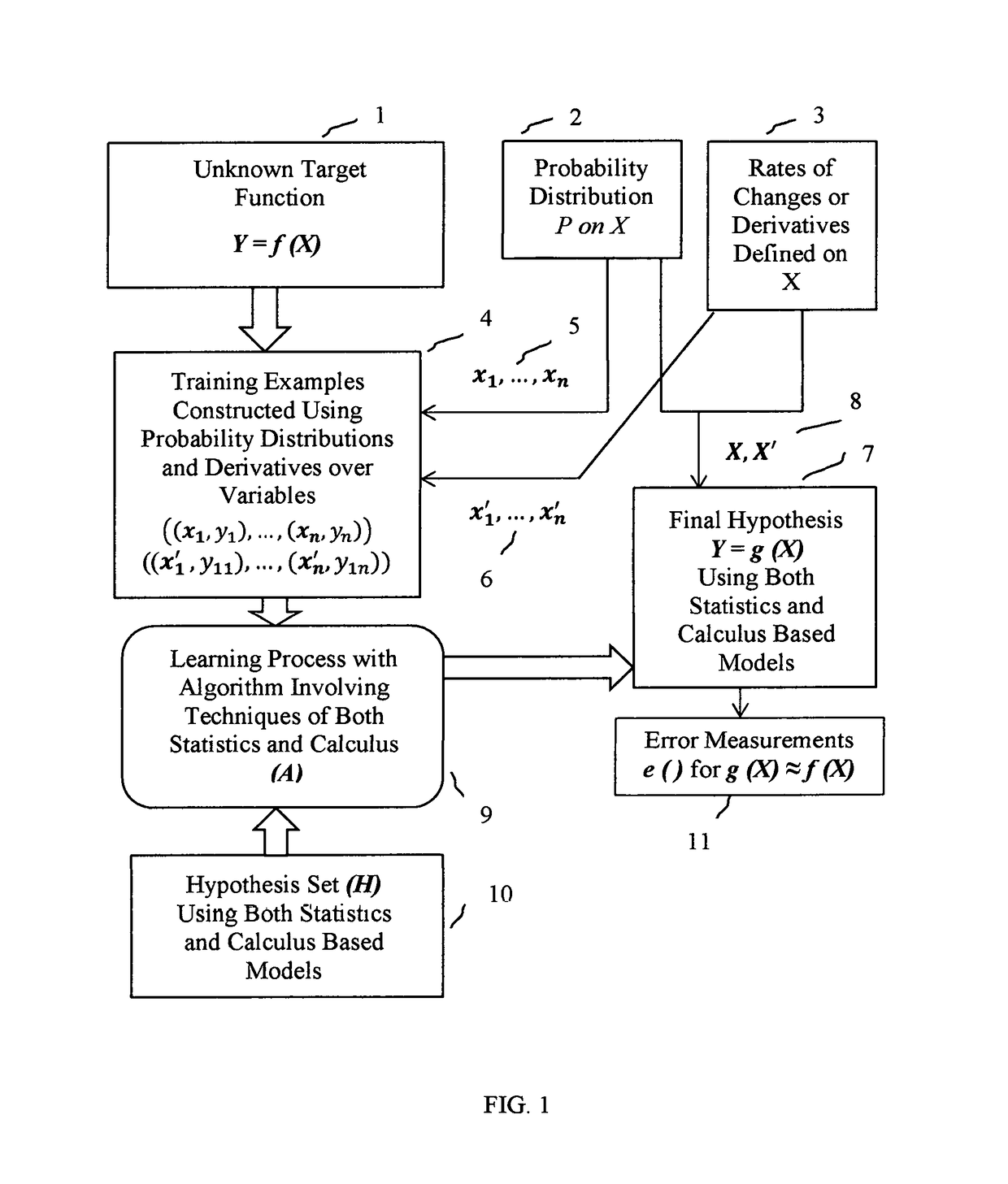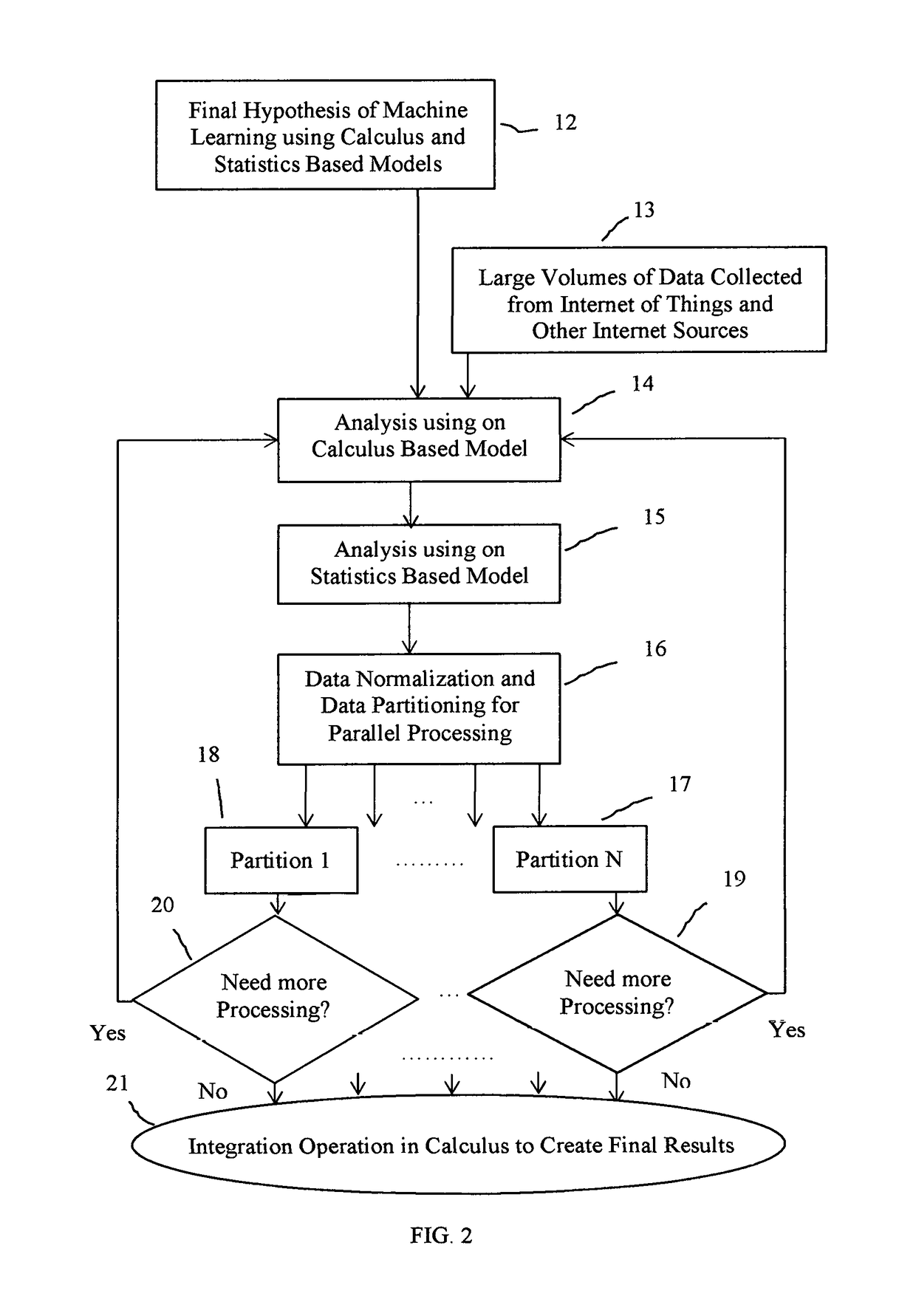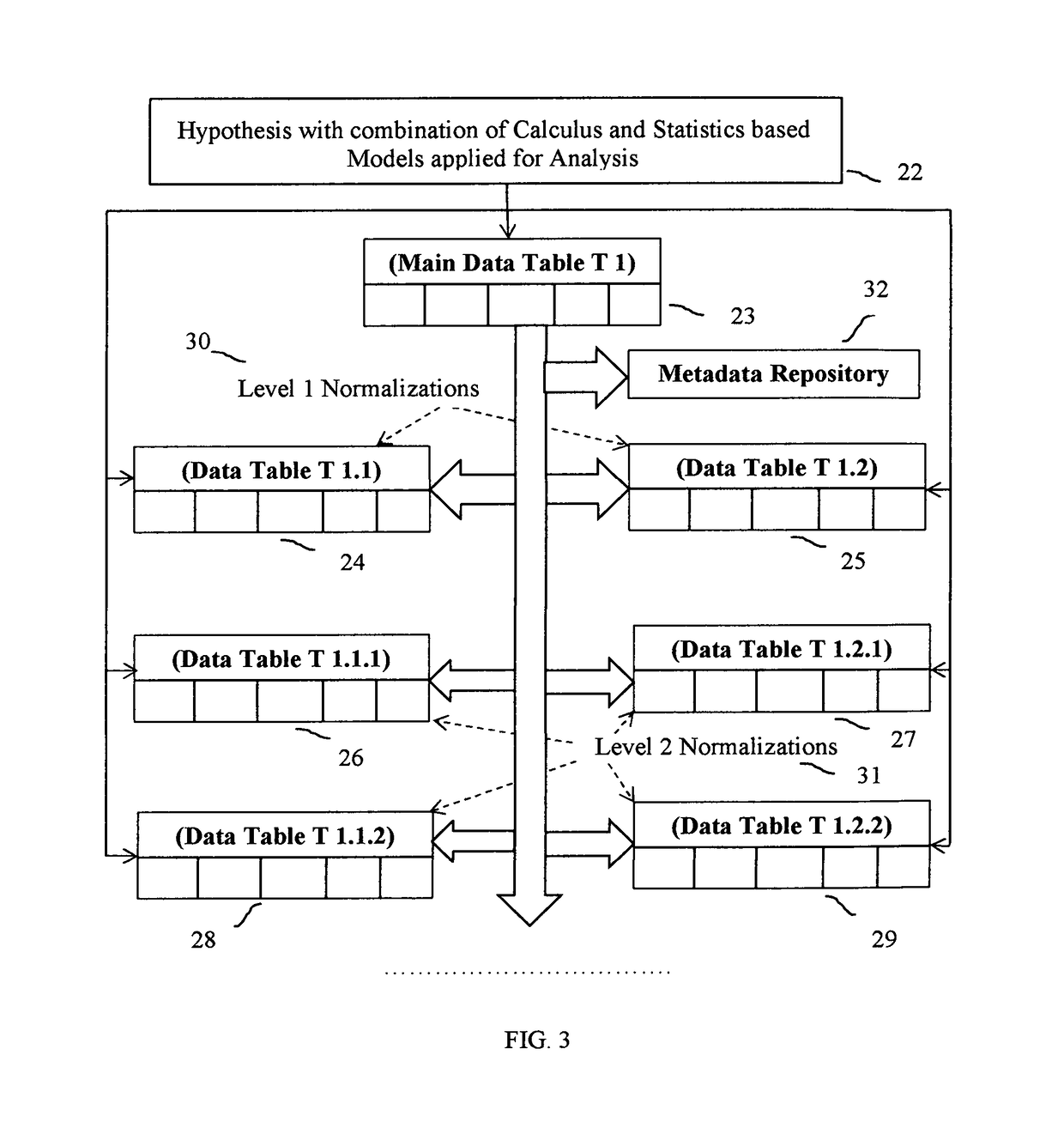Method and apparatus for combining techniques of calculus, statistics and data normalization in machine learning for analyzing large volumes of data
a machine learning and data normalization technology, applied in the field of big data analytics system, can solve the problems of limited training data set size, inability to capture all forms of distribution, and high amount of energy required to obtain values from sensors, so as to reduce errors, increase the overall performance of machine learning, and reduce the effect of parallel execution
- Summary
- Abstract
- Description
- Claims
- Application Information
AI Technical Summary
Benefits of technology
Problems solved by technology
Method used
Image
Examples
Embodiment Construction
[0053]This description, which references the above-identified figures, narrates one or more specific embodiments of one or more inventions. These embodiments, offered only to exemplify various inventions, are shown and described in sufficient details to enable those skilled in the art to understand these inventions. Thus, where appropriate to focus deeply on the invention, the description may omit certain information already known to those of skill in the art.
[0054]This invention in a preferred embodiment includes a machine learning method with unique mathematical model based on both techniques of calculus and statistics. FIG. 1 is a conceptual flow diagram illustrating unique conceptual model for machine learning method, in accordance with one or more aspects of the present disclosure. An unknown target function f (X) is shown in block 1 at the start of machine learning method in this invention. At block 2, some samples are created from probability distribution P on data values X f...
PUM
 Login to View More
Login to View More Abstract
Description
Claims
Application Information
 Login to View More
Login to View More - R&D
- Intellectual Property
- Life Sciences
- Materials
- Tech Scout
- Unparalleled Data Quality
- Higher Quality Content
- 60% Fewer Hallucinations
Browse by: Latest US Patents, China's latest patents, Technical Efficacy Thesaurus, Application Domain, Technology Topic, Popular Technical Reports.
© 2025 PatSnap. All rights reserved.Legal|Privacy policy|Modern Slavery Act Transparency Statement|Sitemap|About US| Contact US: help@patsnap.com



